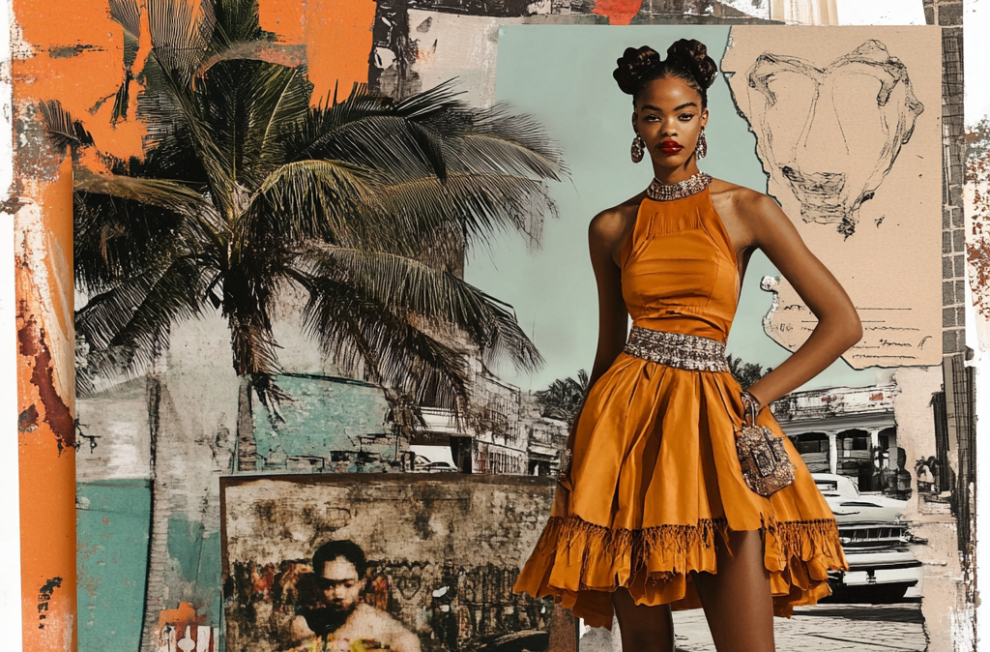By Francesca Sterlacci
In a world where trends blaze through faster than a New York minute, one might expect the fashion industry to wholeheartedly embrace the transformative power of 3D and AI. Yet, the reality reveals a more nuanced picture—a hesitant tiptoe rather than a confident stride. This cautious approach to groundbreaking technology isn’t entirely new to an industry steeped in tradition. For the past 50 years, as a designer, former Fashion Institute of Technology (FIT) professor and fashion department chair—witnessing this evolution firsthand—I observed similar initial resistance to the introduction of computer-aided design (CAD) tools for drawing and pattern design software (PDS) for pattern making, marking and grading. It’s almost hard to believe now how indispensable programs like Photoshop and Illustrator, along with digital tools like Gerber, Lectra and Tukacad, have become. And yet, today, as founder of University of Fashion, the first and largest online fashion education learning platform, I’m witnessing similar pushback when it comes to 3D and AI.
Despite the inevitable acceptance of Photoshop and Illustrator within the fashion industry, the launch of our 3D lessons at University of Fashion in 2022 and our AI lessons in 2024 were met with some skepticism. I began receiving emails from our subscribers challenging whether these programs constituted “real designing.” However, let me be unequivocally clear: These are not fleeting fads; they are fundamental tools that are undeniably here to stay. While the specter of job displacement looms large in some minds when AI is mentioned, the practical reality is that these technologies serve as powerful catalysts—used to stimulate inspiration, expand creative boundaries (allowing designers to visualize complex forms or explore unconventional silhouettes with unprecedented ease), and ultimately enhance, not replace, human work.
AI’S Early Adopters
Reinforcing the notion that AI is not a fleeting trend, McKinsey analysts predict that generative AI could significantly boost fashion industry profits by $150 billion to $275 billion by 2030. Further emphasizing this shift, their recent survey claims that a substantial “73% of global fashion executives consider generative AI to be an important strategic priority.” Therefore, embracing AI across a comprehensive spectrum of tasks, including designing, sewing, merchandising, production, marketing, promotion and sales, is clearly the way forward.
I will explore how some fashion brands have already incorporated AI into their design processes and are even using it to create valuable legacy archives. This widespread acknowledgment by industry leaders underscores the vital role of the University of Fashion in upskilling and educating the fashion industry in these new technologies—affordably, on demand, 24/7, and conveniently in the privacy of your home or office.
AI for Trend Prediction and On-Demand Fashion
In our inaugural AI lesson, Anna Leighton, winner of AI Fashion Week Season 1 (2023) and Season 2 (2024), charts AI’s fascinating history, from its theoretical beginnings to its profound and transformative role in shaping the fashion landscape today. You’ll discover how AI is fundamentally reshaping the industry—conceiving novel aesthetics, intelligently allocating resources, and even forecasting the next must-have trends.
Desigual
In 2023, the Spanish fashion brand Desigual launched its first “Online Only On-Demand” collection. The garments and denim bags were produced once the customer bought them online, with an estimated manufacturing time of 90 days. This innovation allowed the brand to make better forecasts for raw material needs and logistics. According to Desigual, the key to success in this process has been learning to manage
the technology to enhance creativity. This strategy not only improves efficiency but also offers a more personalized and sustainable fashion experience for consumers.
Tommy Hilfiger
In 2024, Tommy Hilfiger boldly stepped into the metaverse with “FashionVerse,” an interactive mobile game powered by generative AI. This innovative platform allows users to create photorealistic avatars and design entire virtual worlds, from backdrops to props, all while styling digital fashion looks. This immersive experience fosters a deeper connection with the brand, enabling players to participate in styling challenges and potentially influence future trends. By analyzing player style choices within FashionVerse, Tommy Hilfiger gains valuable insights to predict emerging fashion trends, which are then incorporated into unique styles for its TommyNow collections. These AI implementations underscore Tommy Hilfiger’s commitment to leveraging cutting-edge technology to revolutionize design processes, enhance customer engagement through personalized experiences, and solidify its position as a forward-thinking brand in the digital age.
AI for Conceptualizing and Designing Fashion Collection
In our second AI lesson, “AI: Getting Started with Prompts,” you’ll unlock the secret to transforming AI from a mere tool into a true creative partner. A great prompt isn’t just a description; it’s a meticulously crafted recipe where every carefully chosen word adds a layer of richness, detail and profound depth to your design, ultimately transforming your vision into a stunning reality. Specifically, you’ll learn how to construct a fashion image from the ground up by carefully describing each intricate design detail, setting the perfect angle, and choosing ideal lighting, among other crucial elements. By focusing on the nuances of prompting, you’ll discover how to translate your unique perspective and vision into a captivating image and compelling story.
G-Star Raw
In 2024, G-Star Raw collaborated with artificial intelligence to create a groundbreaking denim collection. The project resulted in 12 unique, cape-like denim designs, each showcasing futuristic silhouettes and innovative techniques that push the boundaries of traditional denim, making it the world’s first AI- designed denim garment realized in the physical world.
In our third AI lesson, “AI: Midjourney, the User-Friendly AI Platform,” you will learn the practical steps to using Midjourney that will truly bring your most imaginative fashion design ideas to vibrant life. You will be guided through the simple process of setting up Midjourney on Discord and be shown the seamless navigation of this dynamic online platform. By the end of this lesson, you will master the techniques to generate stunning, portfolio-worthy visuals, effortlessly experiment with a vast array of design variations, and ultimately unlock the boundless creative potential that this incredible and accessible tool offers.
Collina Strada
Illustrating the power of platforms like Midjourney, Hillary Taymour, the visionary creative director at Collina Strada, collaborated with the AI image generator to conceive her Spring/Summer 2024 collection. She expertly input images of previous Collina Strada designs and then used precise text prompts to guide the AI in radically remixing and innovatively reimagining them in entirely new ways. Far from being an instant solution, Taymour noted that designing with AI was a deeply iterative process. For certain designs, she meticulously navigated over 200 iterations with the AI, patiently refining the AI-generated images until they perfectly aligned with her artistic vision and achieved the desired outcome.
AI To Keep a Designer’s Legacy Alive
Norma Kamali
In 2023, designer Norma Kamali partnered with Meta Maison to develop a proprietary AI model trained on her archives to preserve her legacy. In February 2024, she showcased her AI-generated designs in an installation called “Fashion Hallucinations.” Kamali told Glossy magazine, “AI is set to shape the industry’s approach to archiving and to facilitate creative longevity.”
AI as Creative Assistant
As we navigate the evolving landscape of AI—even amid technological advancements—our mindset and perspective play a crucial role in shaping our experiences and the future we create. So, remember to keep in mind this inspiring quote:
“The greatest discovery of all time is that a person can change his future by merely changing his attitude.”
— Oprah Winfrey








